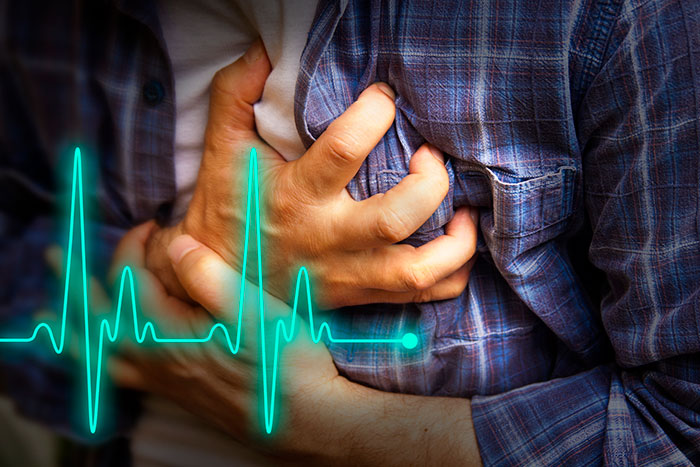Whilst one is considerably more dangerous to your health than the other, the symptoms of both a panic attack and a heart attack can be very similar, which can make it very difficult to tell the difference. For those suffering from a heart attack, early diagnosis and treatment is critical. With the rate of heart attacks and sudden cardiac arrests rapidly rising in recent years, every home and business should have an AED/defibrillator within easy reach. If you are looking for a defibrillator for sale, Safety Dave is here to help. We carry a diverse range of safety products including reversing cameras, TPMS, first aid equipment, and AEDs to keep all Australians safe. Read on to find out how you can differentiate between a panic attack and a heart attack so you can get the treatment you need.
About Panic Attacks
Whether due to anxiety or other medical conditions, thousands of Australians experience panic attacks every day. Coming on quickly and generally reaching peak intensity in about 10 minutes, panic attacks can be triggered by a traumatic event or stress, but they also can occur for no apparent reason.
Symptoms of a panic attack can include:
- sharp pains in the chest
- tingling in the hands
- difficulty breathing
- pounding or racing heart
- sweating and shaking
- weakness or dizziness
Breathing is the best way to overcome a panic attack; breathe in as slowly, deeply, and gently as you can, through your nose and breathe out slowly, deeply, and gently through your mouth. You should start to feel better in just a few minutes.
About Heart Attacks
A heart attack happens when the blood flow that brings oxygen to the heart muscle is severely reduced or cut off, usually by blockage of coronary arteries. Immediate treatment is critical to ensure survival.
Symptoms of a heart attack may include:
- chest pain
- shortness of breath
- nausea and vomiting
- sweating and shaking
- light-headedness, feeling weak
If you think you are having a heart attack, call 000 or get to emergency immediately. In some cases, a heart attack requires CPR or defibrillation to the heart to get it pumping again. Bystanders trained to use CPR, or an AED defibrillator may be able to help until professional medical attention arrives.
How to Tell the Difference?
Due to the similar nature of the symptoms, knowing the difference between a panic attack and a heart attack can be difficult. However, there are several things to take into consideration which may help to distinguish between the two.
- Characteristics of the pain – During a panic attack, the pain in the chest is usually sharp or stabbing and localized in the middle of the chest. Chest pain from a heart attack may resemble pressure or a squeezing sensation. Chest pain that occurs due to a heart attack may also start in the centre of the chest, but radiate to the arm, jaw, or shoulder blades.
- Onset of symptoms – Although both conditions can develop suddenly and without warning, some heart attacks come on due to physical exertion, such as after exercise or doing a strenuous task.
- Duration of symptoms – Most panic attacks are over in several minutes. During a heart attack, symptoms will last longer and get worse over time.
Can A Panic Attack Cause A Heart Attack?
Although a panic attack may feel like a heart attack, an actual heart attack is a medical emergency. It is caused by blockage in one or more of the blood vessels to the heart, which leads to an interruption of vital blood flow. A panic attack cannot cause this. It is important to keep in mind though, that whilst a panic attack cannot cause a heart attack, the stress and anxiety that cause panic attacks may play a role in the development of coronary artery disease.
If in Doubt, Seek Immediate Medical Help
As the symptoms of panic attacks and heart attacks are similar, when in doubt, get symptoms checked out. If you experience sudden, severe chest pain, pressure in the chest lasting more than 2 or 3 minutes or chest pain radiating down the arm or into the jaw call 000 straight away.
To buy a defibrillator for your car, home, or workplace, get in touch with Safety Dave today. Call 1800 072 338 or contact us online now.


